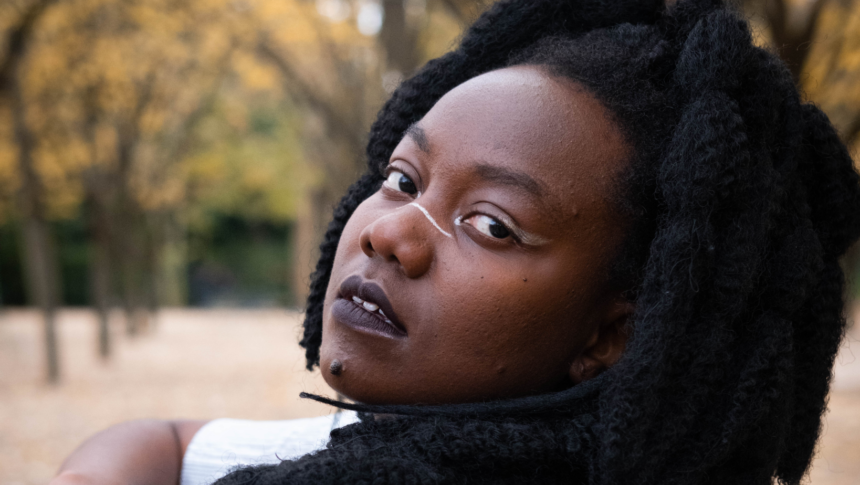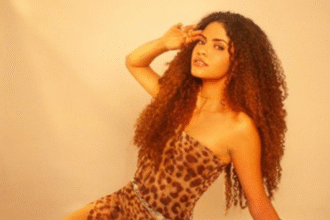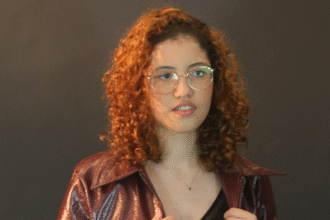With the release of “ Adiref Aul,” Congolese-Brazilian singer-songwriter Marissol Mwaba presents a work that reflects reinvention and introspection. The song, whose title is “Lua Ferida” backwards, is the result of a unique technique called “Reversas de Lossiram ,” developed by the artist to reverse compositions and reveal hidden layers of meaning and emotion. Inspired by her childhood, when she loved to sing songs backwards, Marissol explores a unique sound in a project that also celebrates the connection between music and dance, with strong influences from Arab culture and remarkable collaborations.
You describe ” Adiref Aul” as a reunion with yourself and your art. What was the most memorable moment on this journey when you felt like you were truly rediscovering something deep and unique in your music?
I think each stage of this song represented an important moment. It starts from the moment when, many years ago, I had the courage to sing a song backwards live for the first time. My brother encouraged me a lot, because I was very shy. I thought: “Wow, I’m going to sing a song backwards. They’ll ask what language it is, and I’ll say it’s Portuguese backwards.” Anyway, I had never seen anyone do that, and to this day I don’t know if anyone does it this way – to actually sing a composition and arrange it so that it’s an independent and intelligible song backwards.
I was a little reluctant to do this, but from the moment I realized that it was possible to present this to the public and that the public felt something, I already considered that I was on the path to Adirefaú . In the experiences of singing Adirefaú live, I noticed that the public got involved, and this gave me the feeling of the beat, which I also consider engaging. It is a beat that is more drawn to Arabic music, influenced by my experience with belly dancing and by the in-depth study of Muaim , at the art school where I am supervised by Jade Eljabel . At this school, we have an in-depth study of Mambê , the culture and we investigate the instruments played and the cultural context of each element. I think this familiarity gave me more possibilities to explore these sounds in music.
I felt that Adirefaú was calling for this type of beat, and this represented another step for me, because it was a deep dive into connecting the music I make with one of the types of music I study. The other step was when I produced the beat for the song, bringing together all these references, also with the collaboration of Lucas Romero, who did the musical production with me. He brought many interesting things, and I was able to see myself in that combination of influences. This was also an important step, because I feel that these were deep and unique discoveries. Steps that show that it is possible to unite many of the current influences and references that I have in my life.
I always talk in interviews about my influences, such as the mix of music of African origin, due to my origins as a Congolese-Brazilian, with the music I listened to while growing up in Brazil. Mixing these current references, which I have been studying for the last eight years with Jade, which are more recent in my life, was also a deep dive, because being an artist is an eternal process of discovering, rediscovering, grouping and ungrouping .
Another step was when music and dance were combined for the live performance, where I did all the preparation with Jade. Mariana Quadros choreographed one part, Jade choreographed another, and Jade gave me all the guidance on how to appropriate my own dance. This came together with the music, becoming a profound step in the multi-art sense . Everything that Adirefaú brought me also helped me improve as a singer, especially when I had the opportunity to do speech therapy preparation with my speech therapist, Glaucia Verena, to be able to belly dance and sing at the same time. I had never seen anyone being prepared to belly dance and sing at the same time, and since we combined all these things, daily training also became a place to deepen my relationship with art.
I feel that Adirefaú has gone through several moments of rediscovery, something profound and unique, not only in music, but also in me as an artist. In the possibilities that I envision, and in those that I do not yet envision, but just having this possibility that Adirefaú brought, makes me thirsty to discover other things too, that perhaps I cannot even imagine now.
Adirefaú really opens up a lot of possibilities. One exciting moment for me was seeing the lyrics of a song backwards on Vagalume. I grew up watching chords and things on Vagalume and I had never seen a song that was actually backwards. Seeing my music there in that way was really beautiful. It was a moment of seeing my career as a path that is opening up possibilities, and can generate insights for other things that I might not even imagine. Anyway.
The technique you developed, “ Lossiram Reverses ,” is fascinating and quite unique. What was the process like of transforming a childhood curiosity into such an elaborate artistic methodology?
This was a process that took years. It wasn’t something pretentious. When I started to reverse the songs, I didn’t intend to say, “Wow, I’m going to do this to present this.” It was something that was really driven by feeling, because I was there, in my childhood, enchanted by palindromes and such. So, I took and turned a song backwards, one of my compositions, for lack of anything else to do, as a child playing.
And as I turned around, I started to like some of the sounds that were emerging. Whenever I heard it, I started to hum it. At first, I didn’t know how to sing it, nor did I imagine that I could sing those words. But, over time, I realized that I was learning the melody, without knowing the lyrics. When I recorded it for the first time, singing the melody, I was enchanted. I thought: “My God, imagine if I sang it properly!”
That’s when I started learning and discovering, and I realized that writing helped me better understand those words backwards. I started noting that sometimes the way I read or wrote a word didn’t match the pronunciation, because of my accent or the way the word was pronounced. An example is “good morning”. If I say it exactly as it’s written, backwards, it will be something like “ aizdmob ”. And if I turn it around, it will sound like something that doesn’t match the accent I’m speaking with. If I sing that way, I won’t be pronouncing the word correctly backwards. So I thought: “I need to do some phonetic study”.
And this happened over the years. When I was older, in college, I took some phonetics classes. I’ve always been passionate about languages, and that also guided me a lot. I started thinking: “Okay, there’s a right way, I need to understand how to express these words”. Going back to the example of “bom dia”: backwards, it sounds closer to “ aizdmob ”. And then, the question is: where do I put the stress? If I don’t put it in the right place, the word won’t sound right.
I gradually studied this and created my own writing, something that was understandable to me. Today, when I look at my texts backwards, I can read them correctly, with the correct pronunciation and intonation, due to the signs I created to help me find my way around more easily. Over time, this process developed and I was able to give more life to the melodies, following the lyrics expressed correctly.
Today I am passionate about this. Whenever I have a little more time and want to explore, I listen to new melodies that are hidden in the songs I have written, I go back and learn them. Nowadays, it is a more dynamic, faster process, due to all this development in spelling and writing methods.
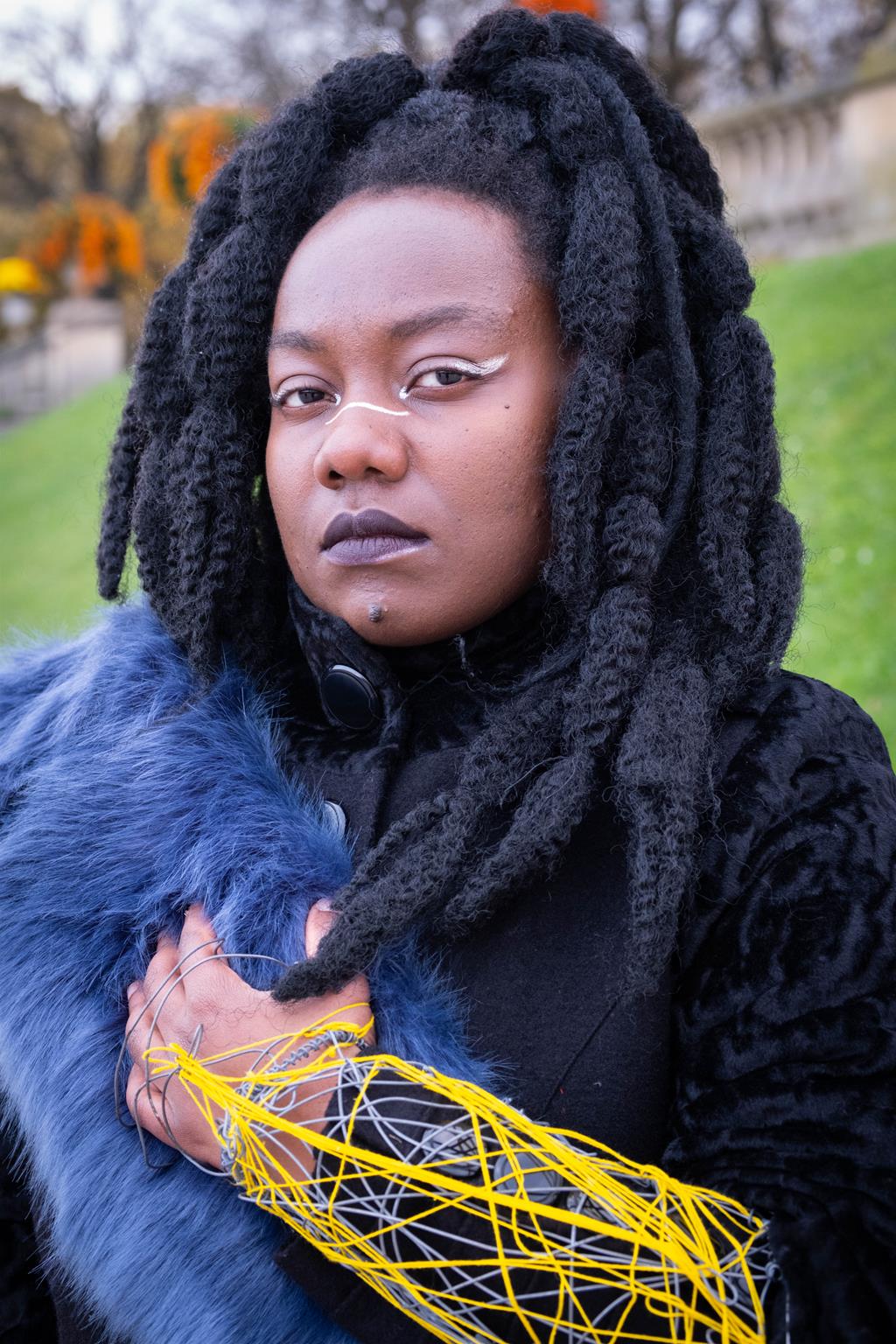
The influence of Arabic music and dance is a central part of ” Adiref Aul”. What fascinated you most about this universe and how did this collaboration with Jade el Did Jabel influence your artistic vision?
I ended up talking a little about this in the first question, right? But, really, this influence is something very central. I think several things influenced me in relation to Jade’s presence as a teacher in my life. One of the main ones is the depth of her teaching method. At Domo Aine , we have access to very deep teaching methods. It’s not a superficial study, we always go back to the content and everything is done in a way that gives us confidence to discover ourselves within what we are studying. In many classes, she also draws parallels with Brazilian culture. We study different rhythms and learn to imprint our own style on what we are learning.
All of this has a lot to do with professional dancers, who I believe are the majority of Jade’s students. Great teachers from Brazil, such as Mariana Quadros, who also collaborated on the choreography, are still her students today. She teaches with a didactic approach that is not only aimed at dancers and teachers, but also at human beings. So, I brought this into my universe and thought: what is my professionalism? What am I? I am a music professional. I started to bring the explorations and provocations that she brought, thinking about dancers, and also about music. And, with that, I started to discover my own connections in relation to this content.
Knowledge gives you freedom. From the moment you feel confident with a certain knowledge, you gain the freedom to apply it. I think it was through this movement that I found the courage to explore this aspect of musicality within my own art. I really wanted to bring in someone who was an expert in Arabic rhythms to play the tambourine in the song, and Jade agreed. She volunteered herself. I was looking for someone to record, and she thought: “It’s going to be difficult to find an instrumentalist and negotiate prices.” So, she went. And it was the first time she had done something like that, recording in a studio and participating in a released track. It was really beautiful to see that, because it was also a discovery for her in that place.
This exchange was very enriching. Jade not only recorded the tambourine, but also the snujes , the tambourine and the choirs. She also sings. In fact, one of the things she brings to Domo Aine is the group called ESTA, within the school, made up of professional dancers and great teachers from Brazil. And, in this group, they have moments when they sing and dance. Jade also sings, and we had this exchange, because I was also her singing teacher.
It was a great exchange and a mutual influence, not only in the field of music or dance, but as artists. We inspired and encouraged each other. All of this came from preparation, from research, and the result is this work. What is beautiful to watch is that everything comes from a long process. At the time, it seems like it happened suddenly, but when we look back, we see that it is a long story, full of details, that culminates in this release.
The music video for ” Adiref Aul” was filmed in Florianópolis and Paris, two cities with distinct meanings in your career. How did these locations contribute to telling the story of your music and your personal transformation?
Wow! That’s a good question! I’ve been reflecting on my life. These two cities, Florianópolis and Paris, have very special meanings for me. Florianópolis is the place where I became an artist, where I became a professional musician. I consider myself an artist from the Santa Catarina scene; it was there that I grew up musically. Although I am a person from many places and my heart belongs to many of them, one of those places is Floripa, which is the artistic and musical scene that shaped me.
Also, Floripa is where I have my family. Most of my nuclear family is there. So, it’s a very, very special city for me, both for my personal journey and for my artistic career.
Paris is also a very special place. Ever since I was little, I have always loved Paris and always dreamed of coming here. When I was a teenager, I had the opportunity to spend my vacations here, because I have family in Paris. Later, when I was in college, I was honored by the Science Without Borders program and studied here. I was a student at the Federal University of Sergipe and did an exchange program at the Sorbonne, where I studied and at the Paris Observatory, and then I did an internship at the Institute of Astrophysics in Paris. The period of this exchange program coincided with the release of my first album, Luz Azul, which marked the moment when my first compositions were recorded and released — something very special in the life of an artist.
I did the launch show here in Paris, and then I went to Florianópolis for another launch show. I had never realized it, but it’s incredible how everything connected: Paris and Floripa. And the album Luz Azul has a song that was very transformative for me and my brother, François Muleka , called Notícias de Salvador, which we co-wrote. This song was later re-recorded by Luê de Luna on her first album and, as a result, became known to many people. François also plays on Luz Azul, and knowing that this song started there, on the album, is something very special.
Paris, for me, is the city that has everything to do with important moments in my life — the release of my album, my connection with astrophysics and my first experience at an Institute of Astrophysics. Working at the Institute of Astrophysics in Paris led me to co-author an article for Astronomy magazine. and Astrophysics , a publication of extreme importance to the scientific community. Even though I did not pursue an academic career, this milestone is huge for me. I am very grateful to my teachers, especially Professor Raimundo Lopes, who made me realize the importance of this achievement.
Now, back in Paris, I am coming out of a very difficult time as an artist. Being an independent artist has never been easy, but I went through some very delicate issues that made me feel that my work was undervalued. It was a huge creative break, with a lack of desire to be in contact with art. And during that period, dance was a home for me. While I was in an internal conflict with music, dance was there, always bringing me back to music.
When I arrived in Paris and received a warm welcome from the local scene, I immersed myself in Blossom Talent Agency , which was very important. I spent days in contact with the music, creating and recording. Blossom also offered to record part of my music video here, and we had already recorded another part in Florianópolis with Cinema Perene, my brother’s film company. It wasn’t a plan, but something that happened naturally. When Blossom offered to record the video, I thought it would be an excellent opportunity to show music being present again in my life, as an independent artist, surrounded by people who believe in my work and who make it happen.
I wanted to tell this story in a non-literal way, but one that would leave a breath of inspiration for those who watched it, and that would also be a continuation of Lua Ferida. If you watch the end of Lua Ferida, you’ll see that Adir and Faú ‘s music video starts with the same idea, and the covers of the two music videos fit together almost like a mirrored puzzle. If you put together the covers of Lua Ferida and Adir and Faú , you’ll see that they connect.
It was essential to have Leonor Escola by my side, who prepared me for the performance and also directed the video with me. Working with someone who prepares you for acting is incredible, because that person is deeply connected to the message we want to convey. The part filmed in Paris was also done with Blossom , creating a fusion of independent art. This process had a deep meaning for me, as it is a demonstration of how independent art can be welcomed and performed.
These two cities, Florianópolis and Paris, represent a lot of my story, and the video conveys a bit of that. The visible difference in climate, with the Paris part filmed in the Luxembourg Gardens on a cloudy autumn day, and the Florianópolis part filmed on a summer day, also illustrates the diversity of times and environments in which the artist is, but always serving her purpose of spreading beauty throughout the world.
Combining singing and belly dancing is a combination that requires a lot of physical and vocal preparation. What was the biggest lesson learned during this intense process and how did it transform the way you express yourself artistically?
Wow, this process transformed my entire notion of stage performance. Really. And this process, I’ve always been very committed to studying, I’m kind of a nerd about everything, always very dedicated, but this process required even more studying from me. I needed to practice, at the very least, and do speech therapy exercises , at least twice a day, every day. So, this whole process taught me many lessons about the power of discipline and the transformative power of practice. I always believed in this, but seeing it in practice was something else. When we started with Glaucia and Jade, I couldn’t dance or sing a single line. I couldn’t even get a single line! And I thought: “Wow, I’m not going to be able to do it. It’s not going to work.” And they always believed in me. I thought: “So, I need to trust the people I called to be with me in this process. I’m going to trust them and do everything they tell me to do to see if it will work.” And that was it. I was clung to the discipline and trust that I have in these incredible professionals. I followed all the instructions and did all my homework. And, as I did so, I saw my body transform: its agility, its breathing, its consistency. So, that changed everything. My show went up several notches because of that process, because today I have much more freedom to move, to dance not only this song, but others, to discover and convey messages through my movements. I think it changed everything, like that. That process brought me the care routine that works best for me. Now, I know my body, my voice, my performance, my limitations much more. I know: “Ah, this is missing here.” I know much more because of that process. And, again, the power of discipline and practice.
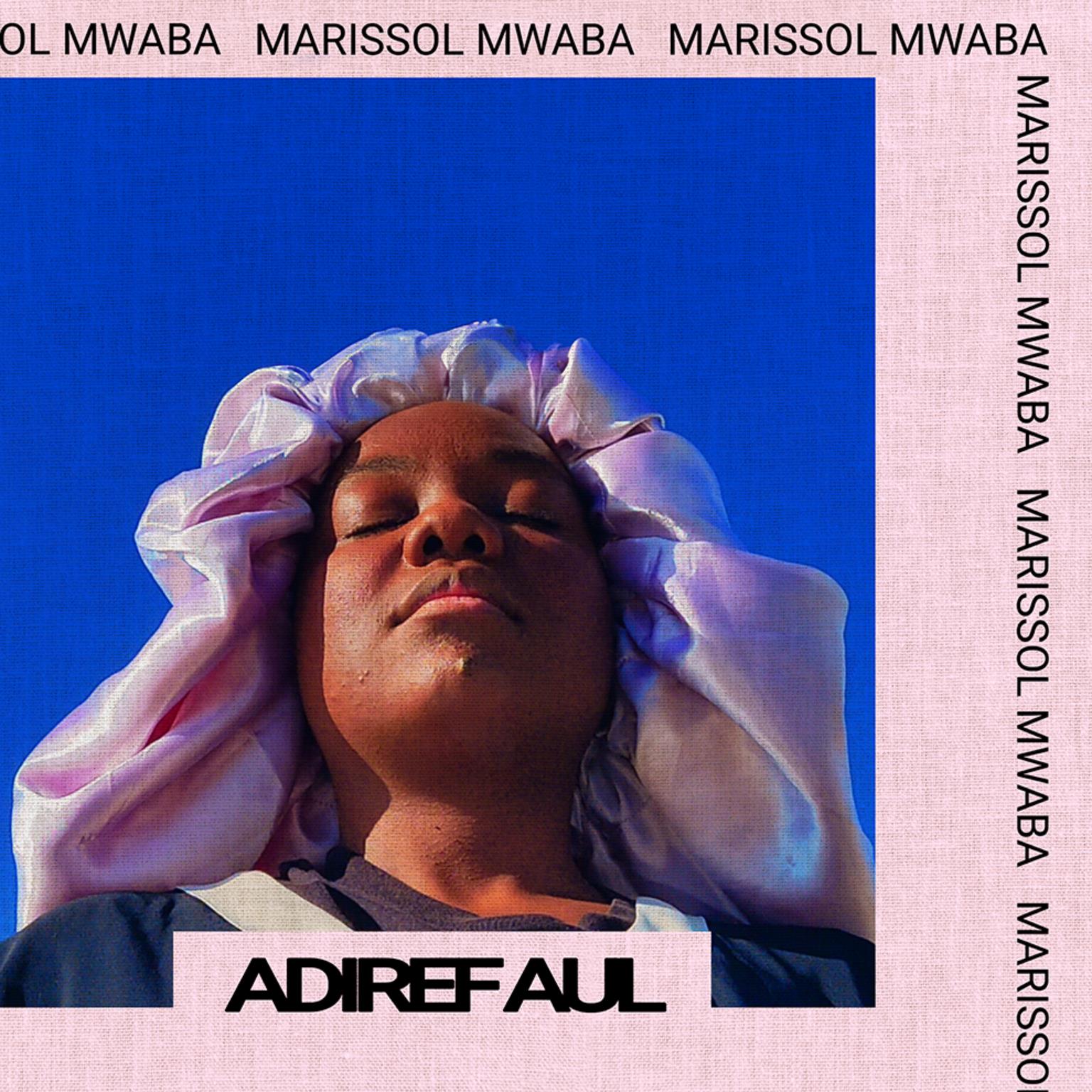
You mention the artist Baloji as an inspiration for the visual style of the music video. How has he influenced the way you view art and how does this reflect in your work?
For me, getting to know Baloji and his art was a milestone. I met him through my brother, François Muleka , who introduced me to a music video. He was already fascinated by the audiovisual, and I was amazed, especially because both François Muleka and I were born and raised in Brazil, but we come from Congolese families. We are Congolese-Brazilians. And there is a big “no place” in this aspect of identity, because we are not Brazilian enough, nor African enough, and we are in a space that is totally different from Afro-Brazilianness, which is not the same as that of Afro-Brazilian people, right? We are African-Brazilians. So, we do not have the same connection in sociocultural context with people who look like us in Brazil. This has always made us feel a bit isolated, you know?
When we discovered the art of Baloji , who is Congolese-Belgian, we identified a lot with the idea of Afrocontemporaneity and of better understanding issues of belonging. There is a lot of talk about ancestry, but the discussion about contemporary Africa in Brazil is still very weak. There are many Africans in Brazil. Where are we? What are we doing? And we are always considered outsiders, and we are left out of these discussions, but when it comes to the privileges that affect us, they affect all of us. So, there has always been this lack of understanding.
Another important meeting for understanding Afrocontemporaneity was with Lameque Macaba , who I met here in Paris. He is a music intellectual and also a musician, but he talks a lot about Afro-contemporaneity . He is also an Afro-contemporary artist , Angolan-Brazilian. His family is Angolan, he was born and raised in Brazil and lives in Paris. He brought this conversation in a very intellectual way, which helped to understand this issue even more.
Baloji ‘s work , we saw ourselves there. I think I saw myself as a possibility of existence and identity the moment I discovered Baloji ‘s work , not only as a singer, rapper and performer, but mainly as someone who expresses visuality in the way he does in his visual and audiovisual works. The still images are very moving, they touch people deeply. Both Leonor, who directed the video with me, and I thought: “No, we need to have still images.” It’s very important to mention the reference, to talk about where it comes from. To mention Baloji , because I see him as a reference for many works that are emerging, especially in the Afrofuturist discourse.
And it is important to say that Afrofuturism also needs to go through Afrocontemporaneity . We need to understand that the Africa that is so much talked about, what is happening today in these countries, where these people are, are they closer to us than we imagine? Anyway, I see Baloji ‘s work as a reference for many things that are emerging today, but, unfortunately, I rarely see him being cited. There is great comfort in omitting references to black, dark-skinned and African people. People feel very comfortable omitting when we are the reference, unless it is something “hype”. And that is very sad. I see this happening, even on the part of black people, who feel comfortable omitting when we are the reference. Our intellectuality is public. That is the feeling.
” Adiref Aul” is described as an invitation to reinvention and transformation. What do you hope listeners will feel or discover as they delve into this very particular experience you have created?
What I hope, what I would like, is for this to be provocative, an invitation to dive deep into the most unlikely things that each human being can have inside them. And also an encouragement, right? I don’t know what a child, for example, might feel when they discover that there is a song played backwards, that is there, released, and that’s it, right? Suddenly, there might be something that they think, something that they themselves judge as crazy, just like I thought singing backwards when I was a child. And then, when I sang for the first time, I felt ashamed of it.
I hope it’s something that encourages people, and encourages artists to look at their own art without fear, to look at what’s inside them without being so limited by what’s outside, so that things emerge in innovative ways, so that more diverse things appear, because every human being… And I think that’s the message: every human being has a unique, very special life. And that’s why sharing is so powerful, because it gives us access to infinite possibilities that we will never experience in our own lives, because it comes from the other, from another place.
And that’s it, I feel the thirst for this, to see the true perspective, of how other people see the world, and how, sometimes, this is limited by what is “sellable” or what would attract an audience. Anyway, what I hope and what I would really like is for this to be provocative in this sense and to encourage people to look, give voice and make room for the things that they may even consider “crazy” in art itself, in creation itself. A creative perspective on the world, on possibilities and on creativity itself.
Follow Marissol Mwaba on Instagram

